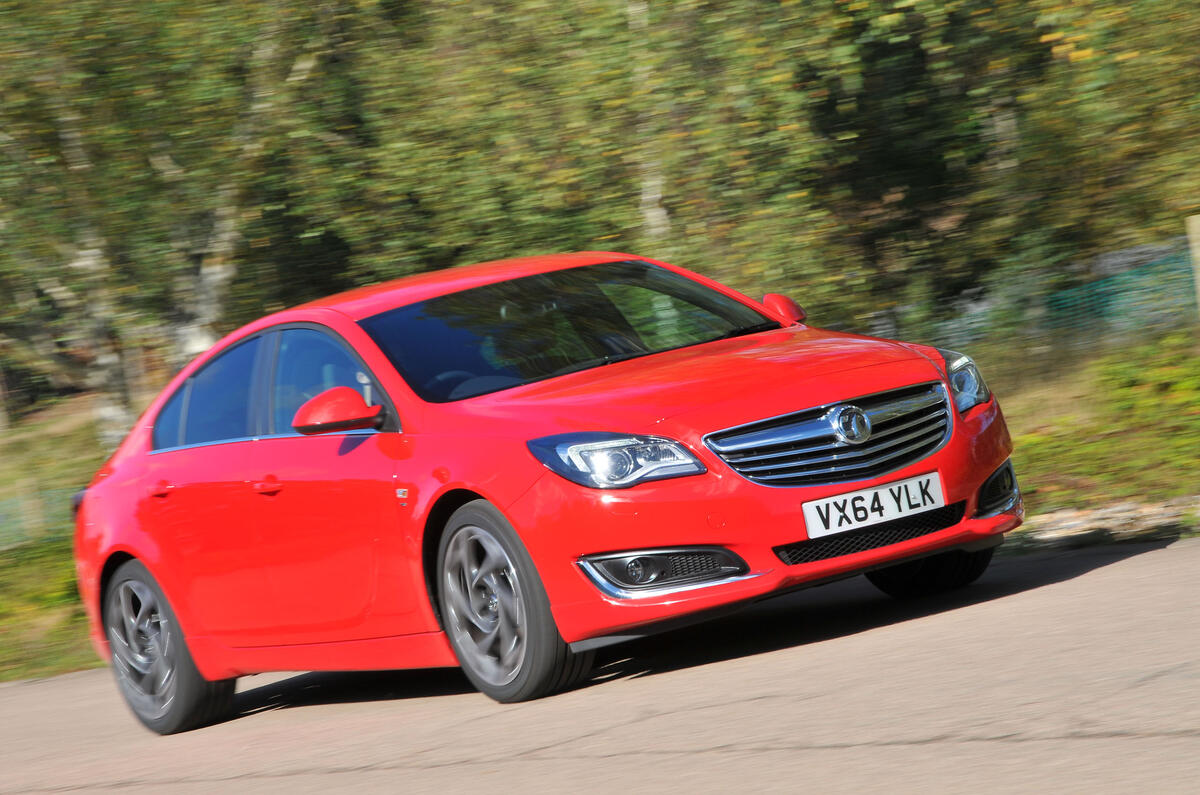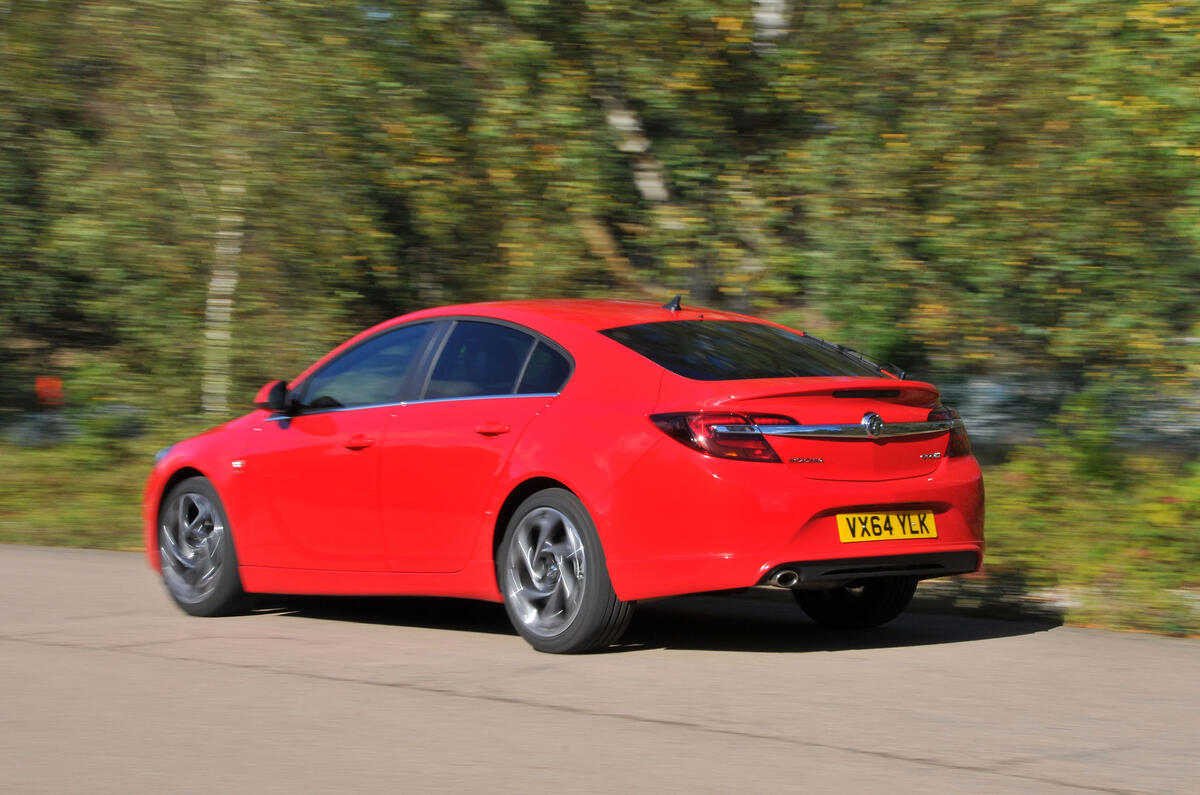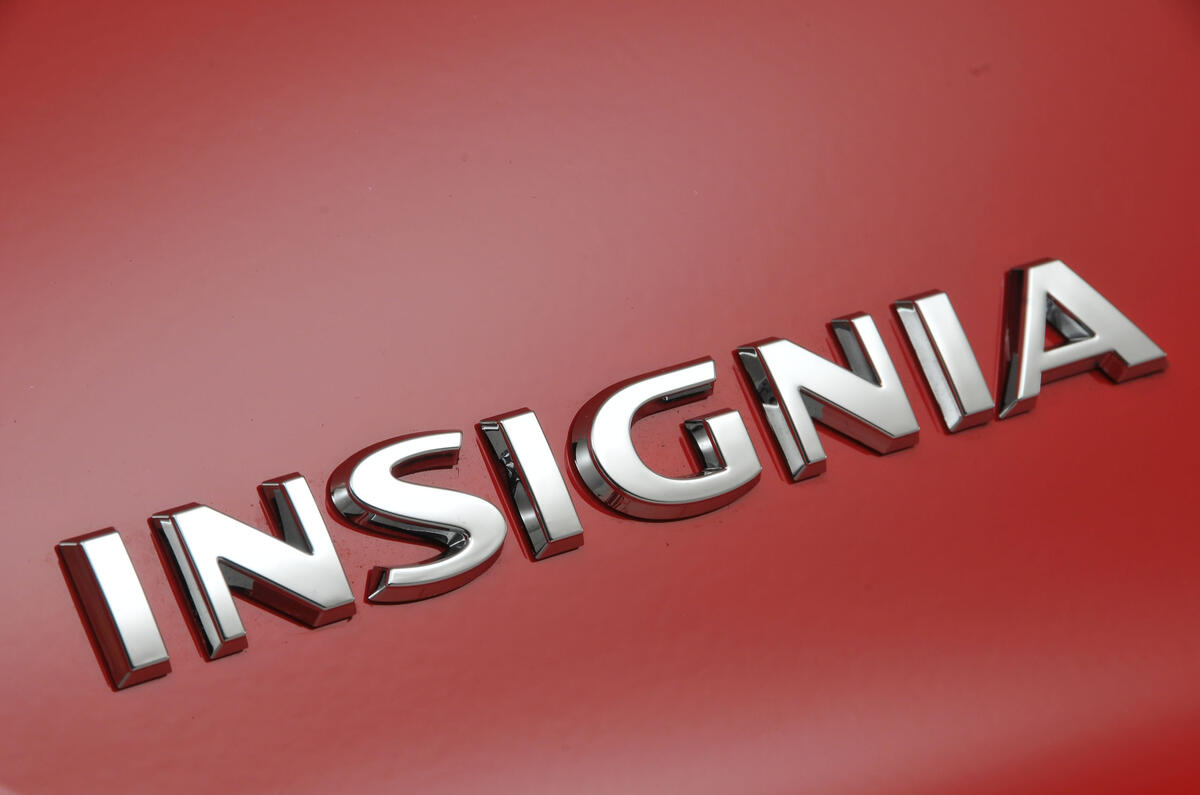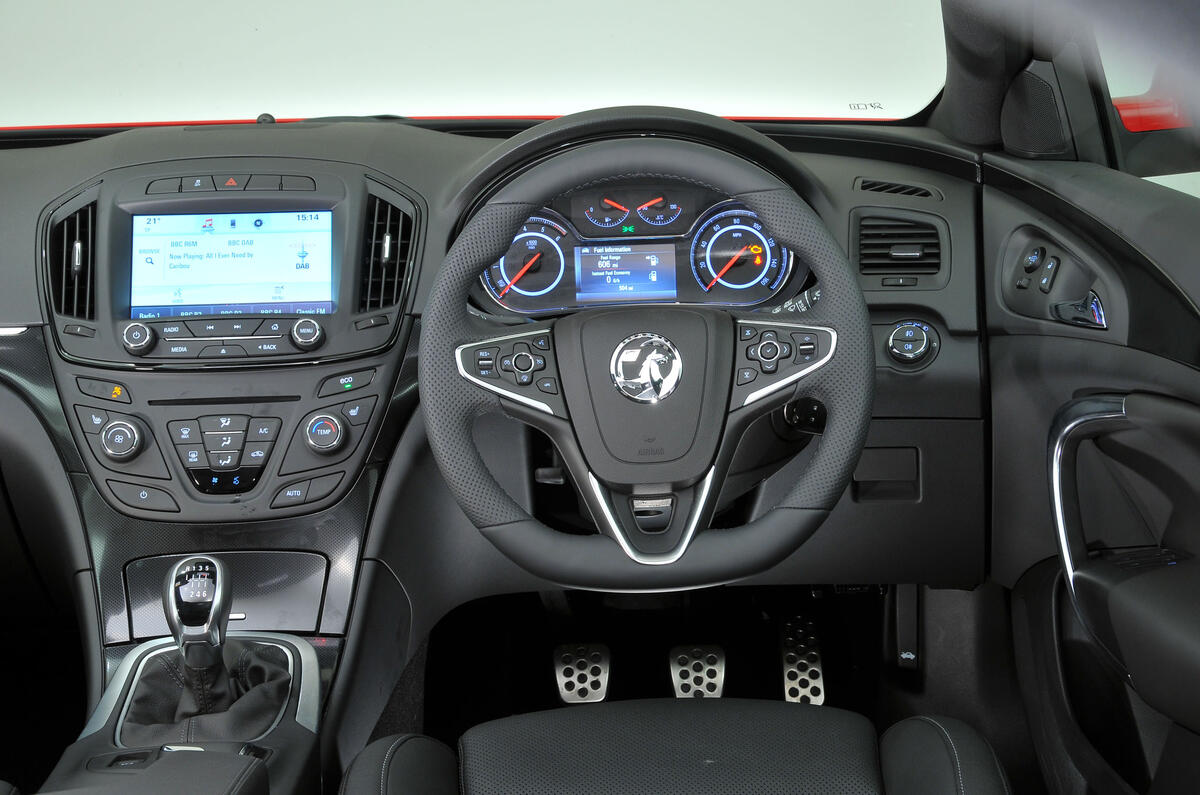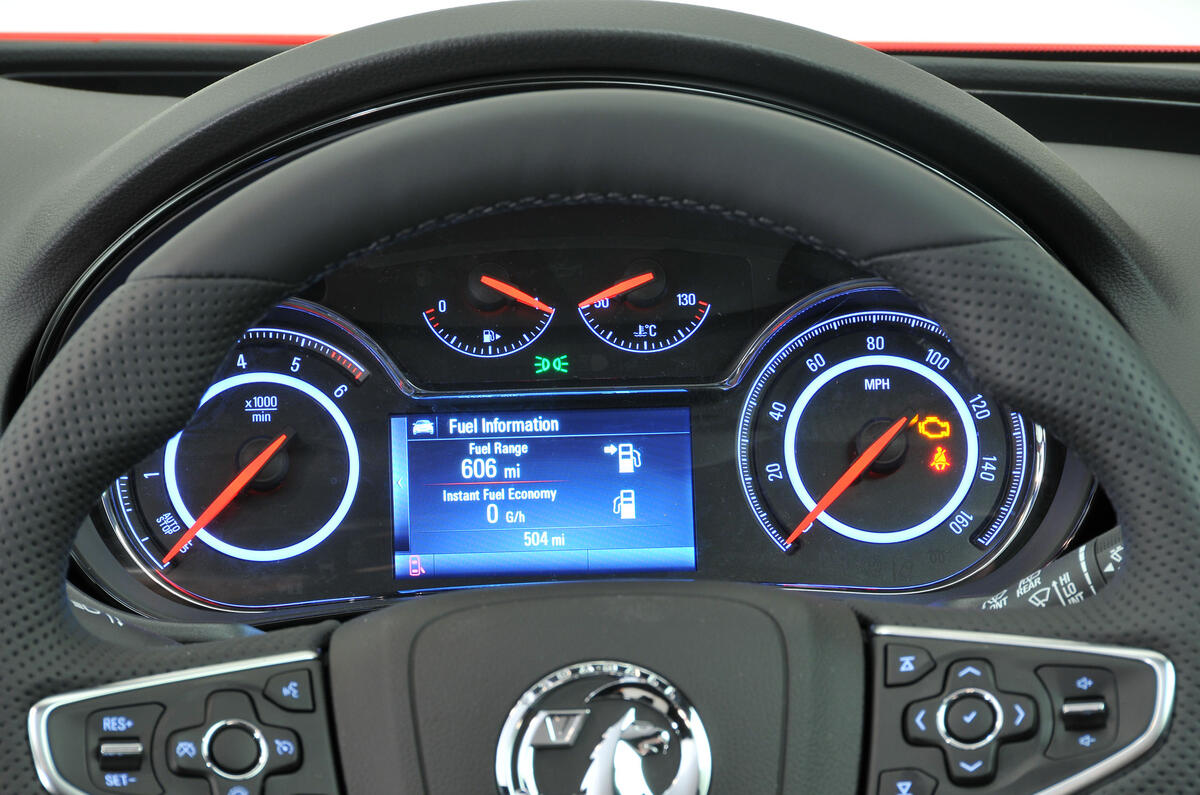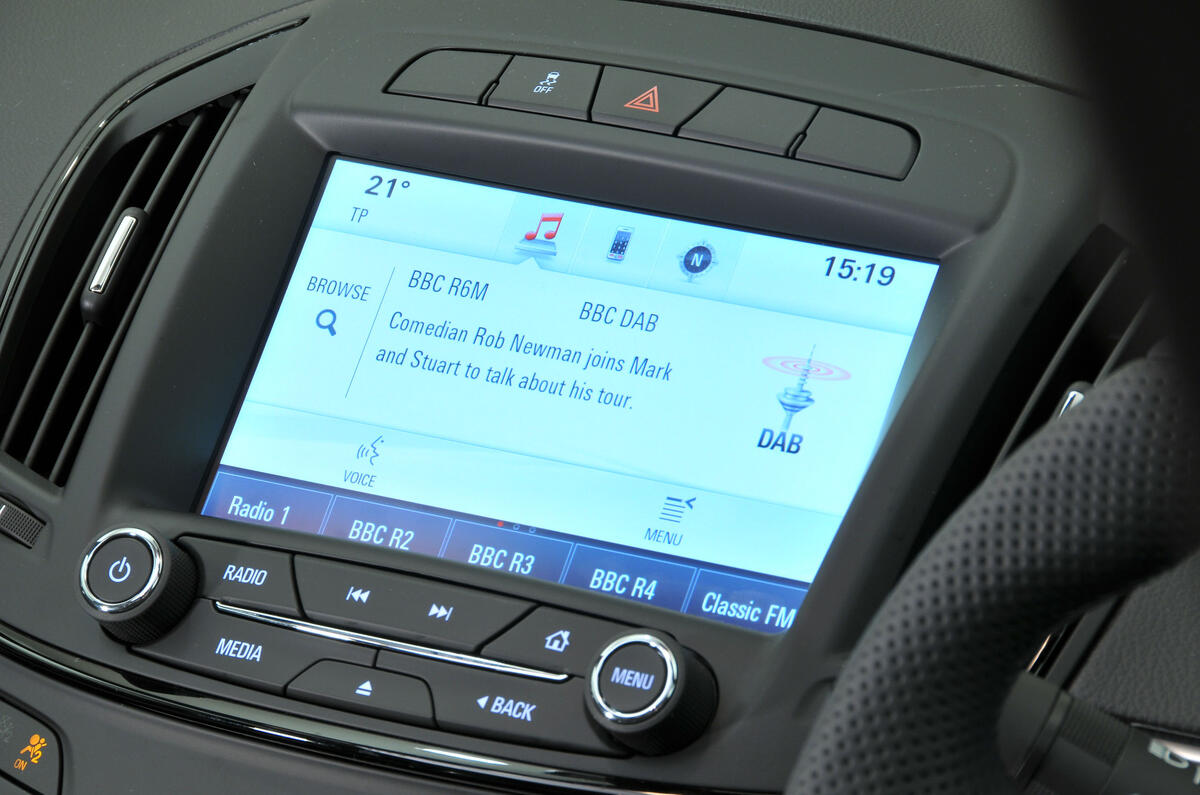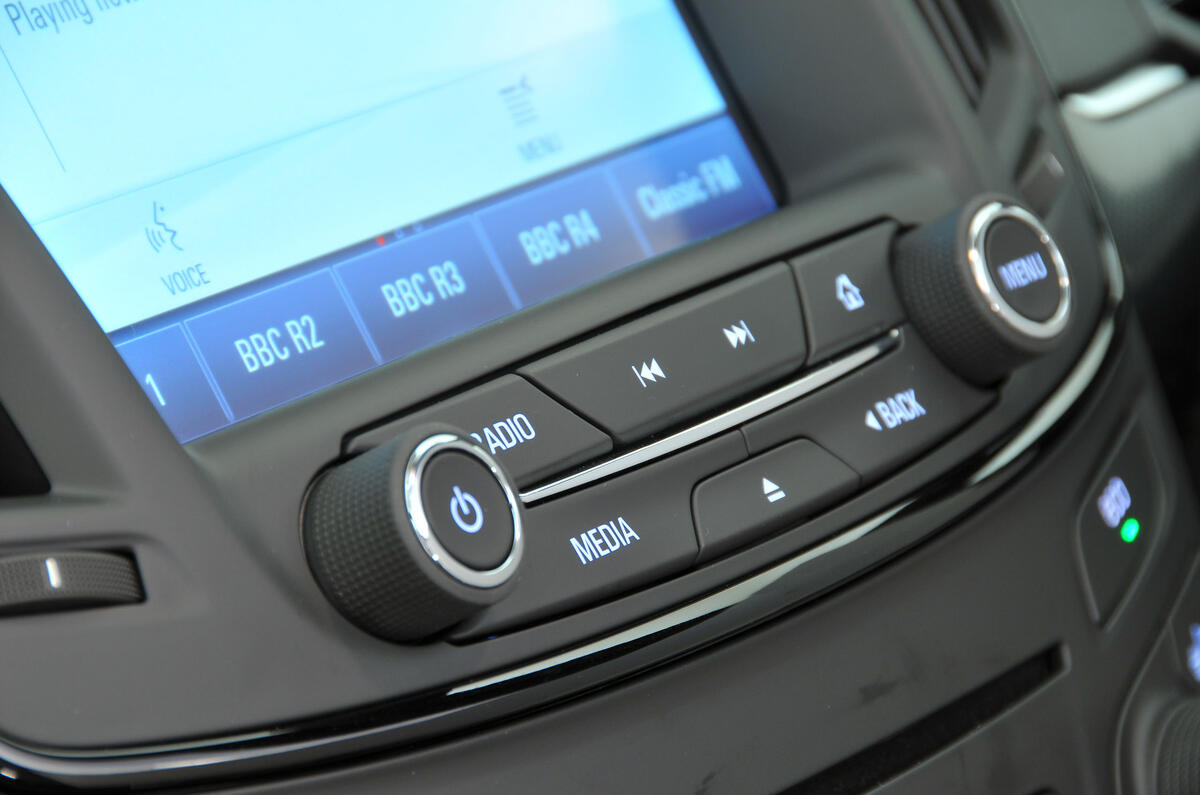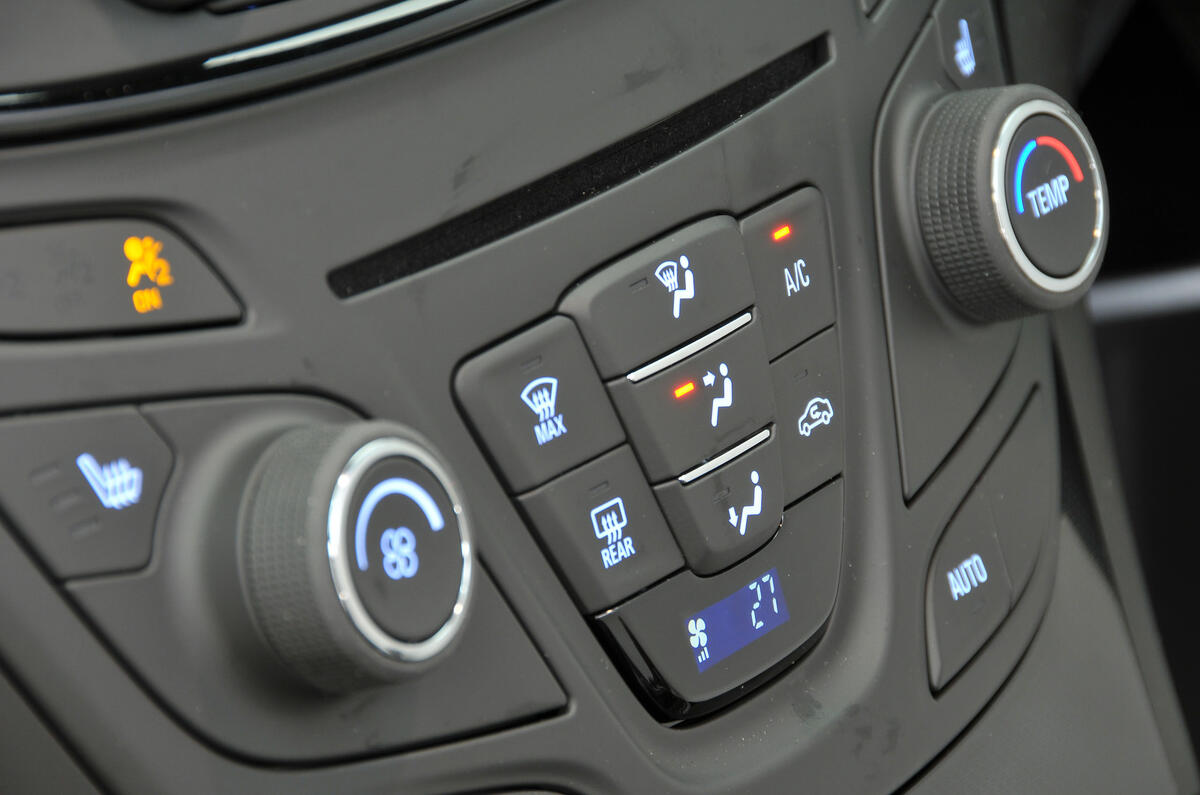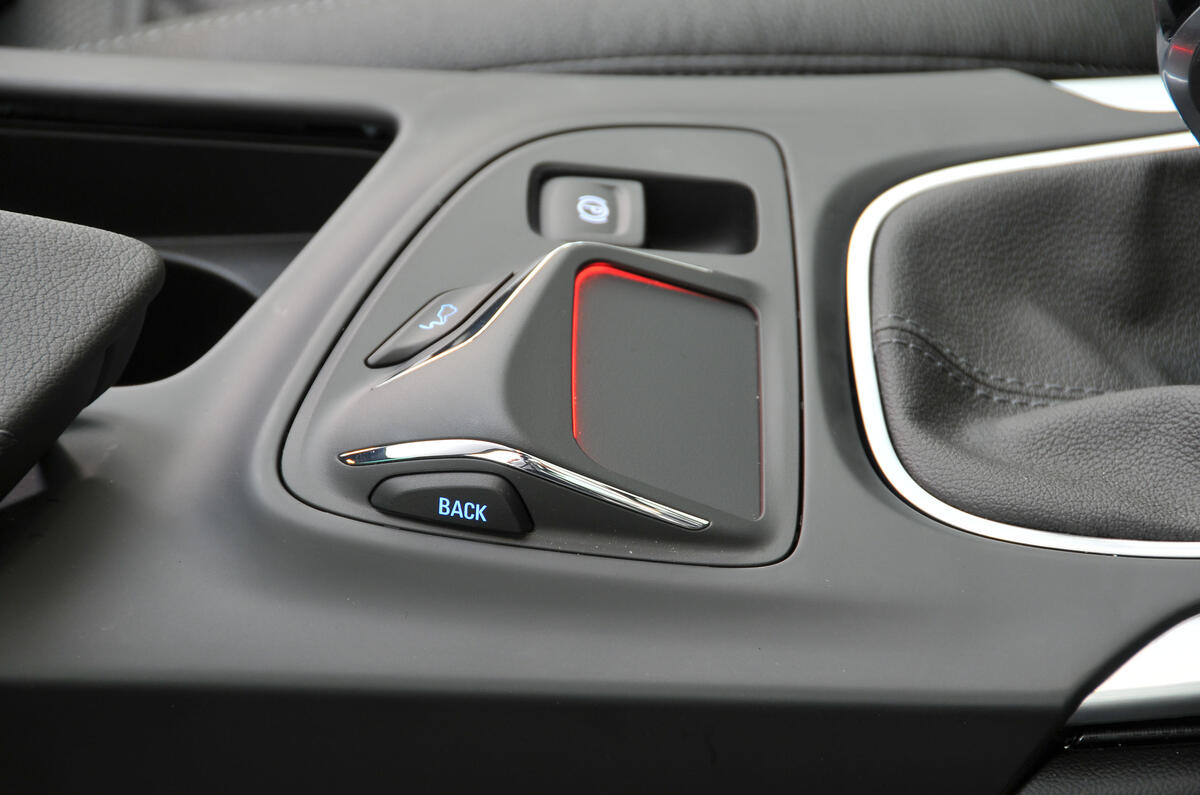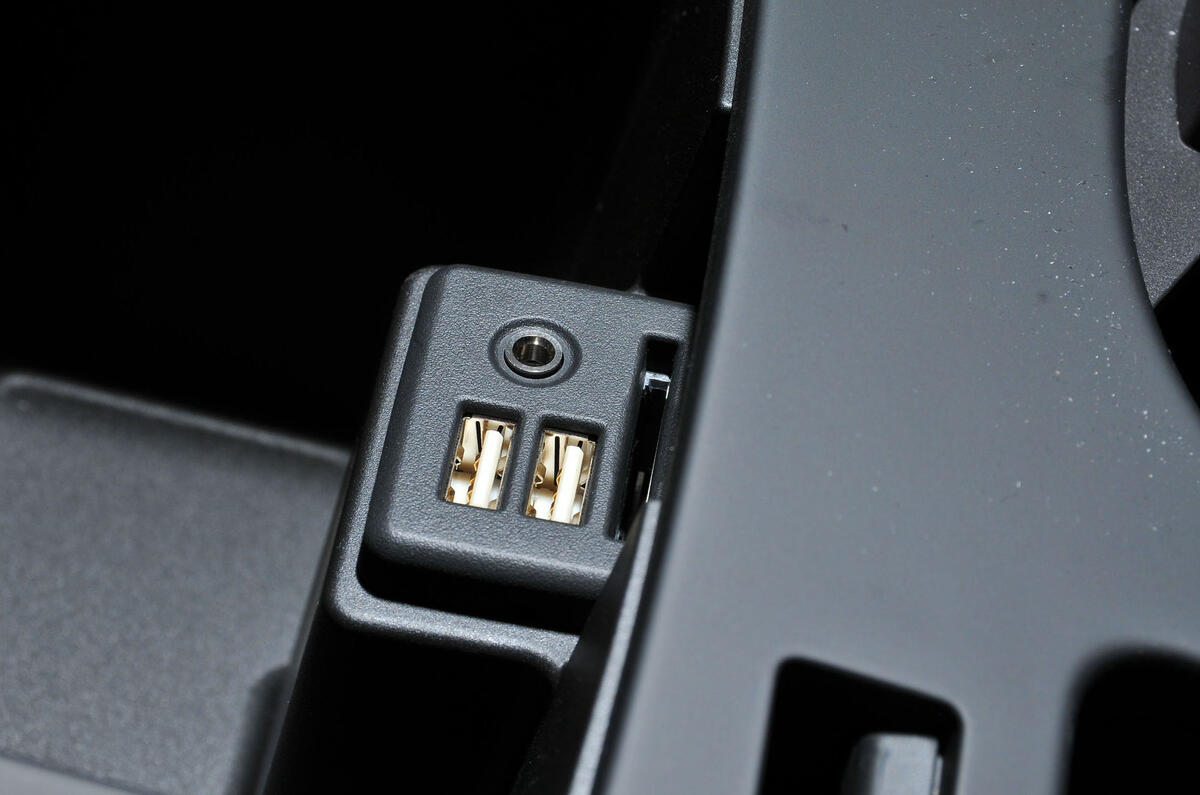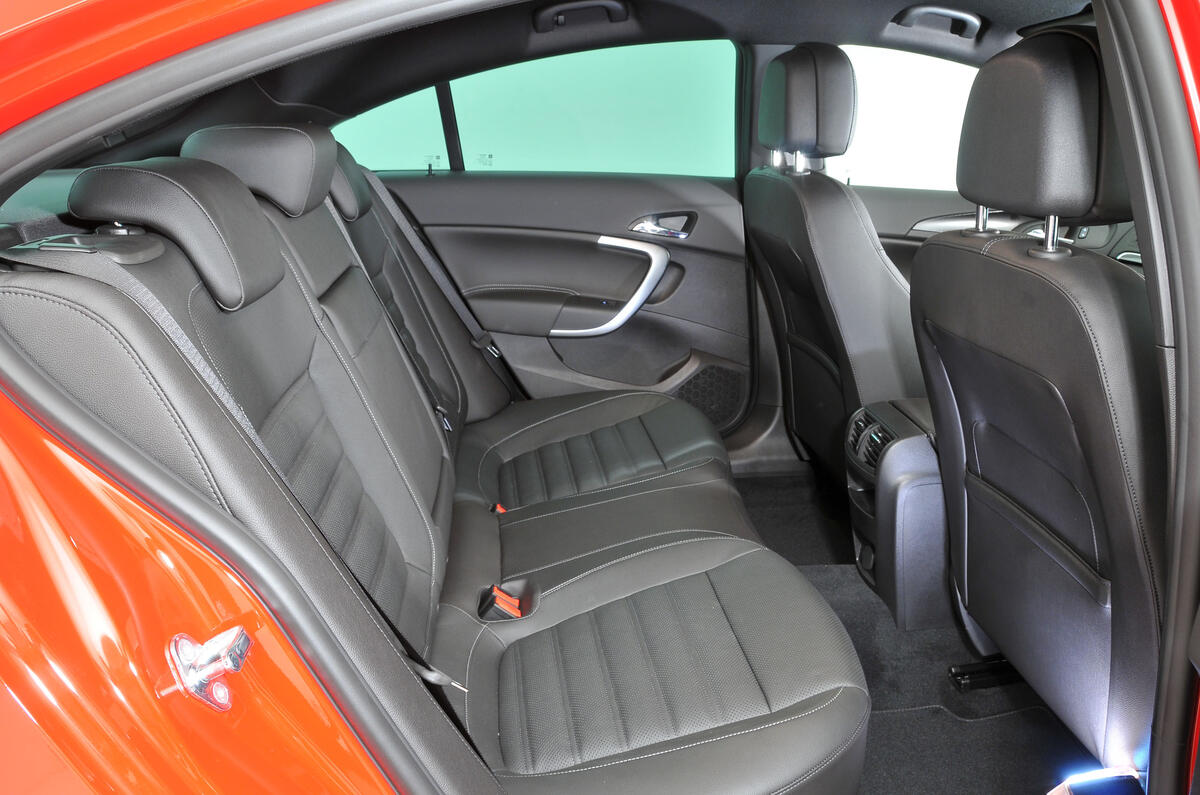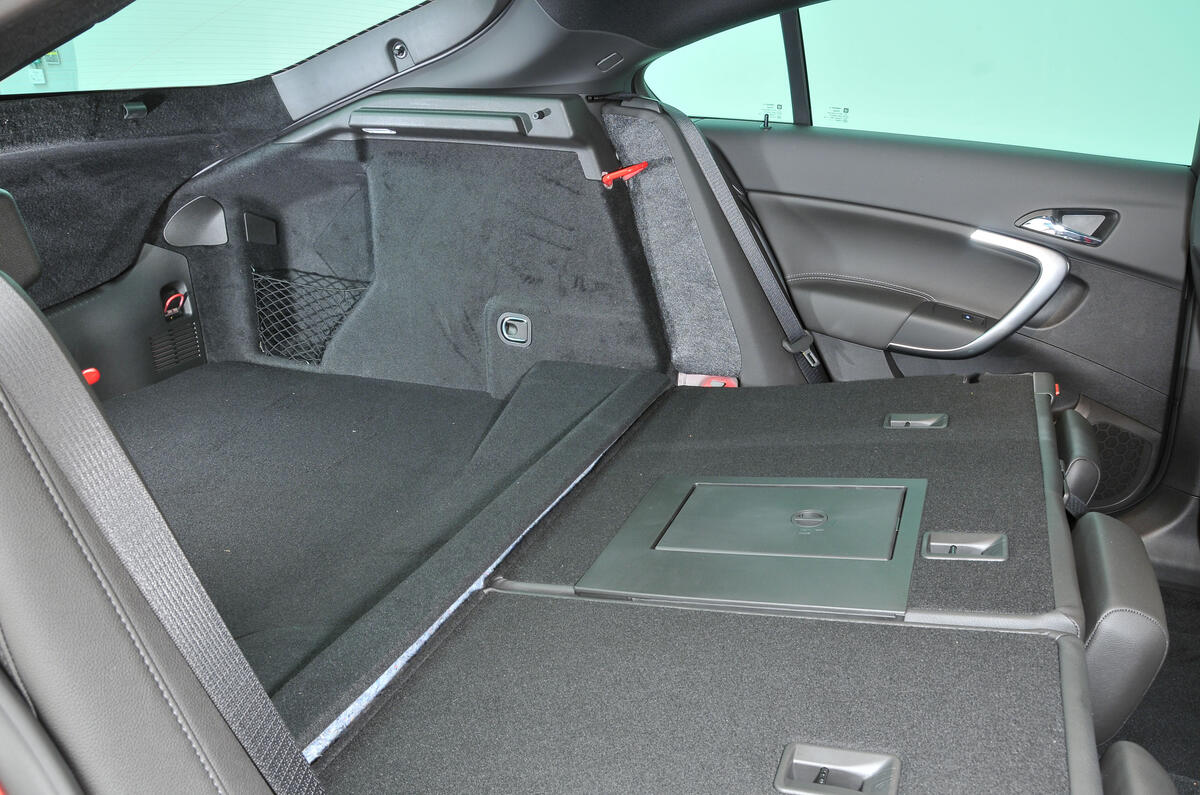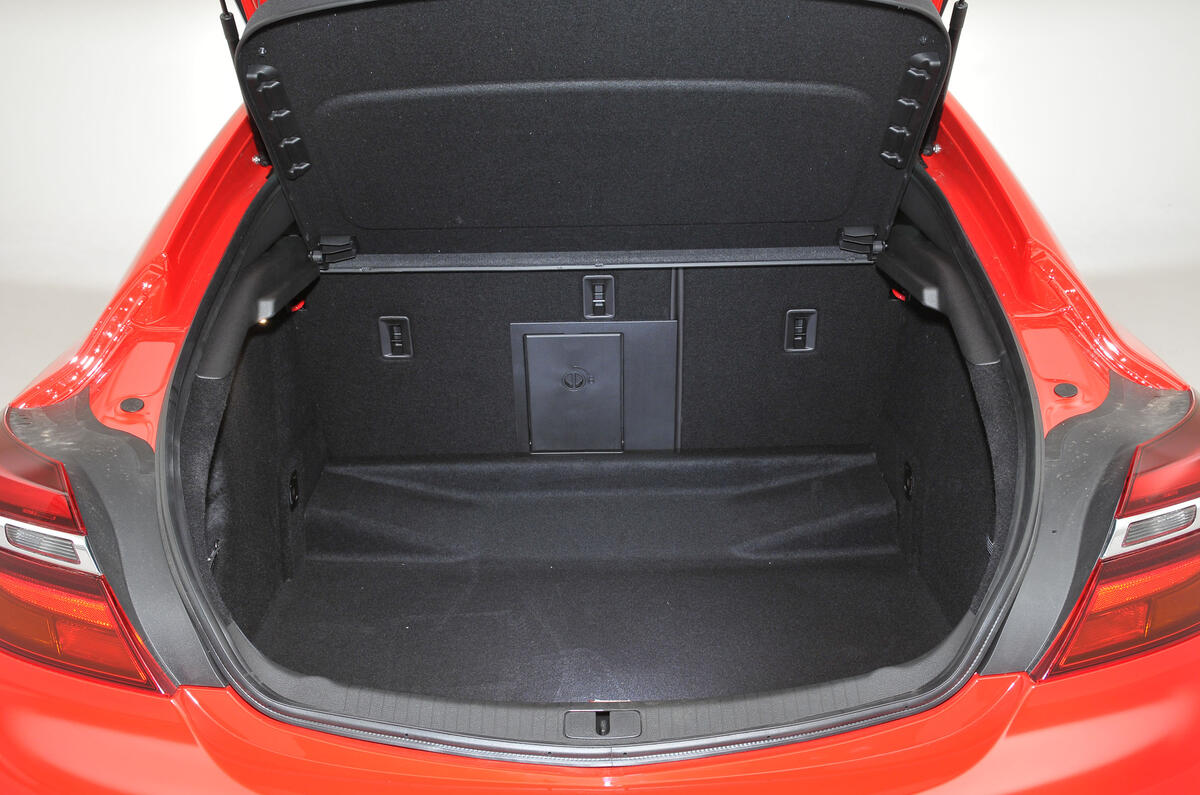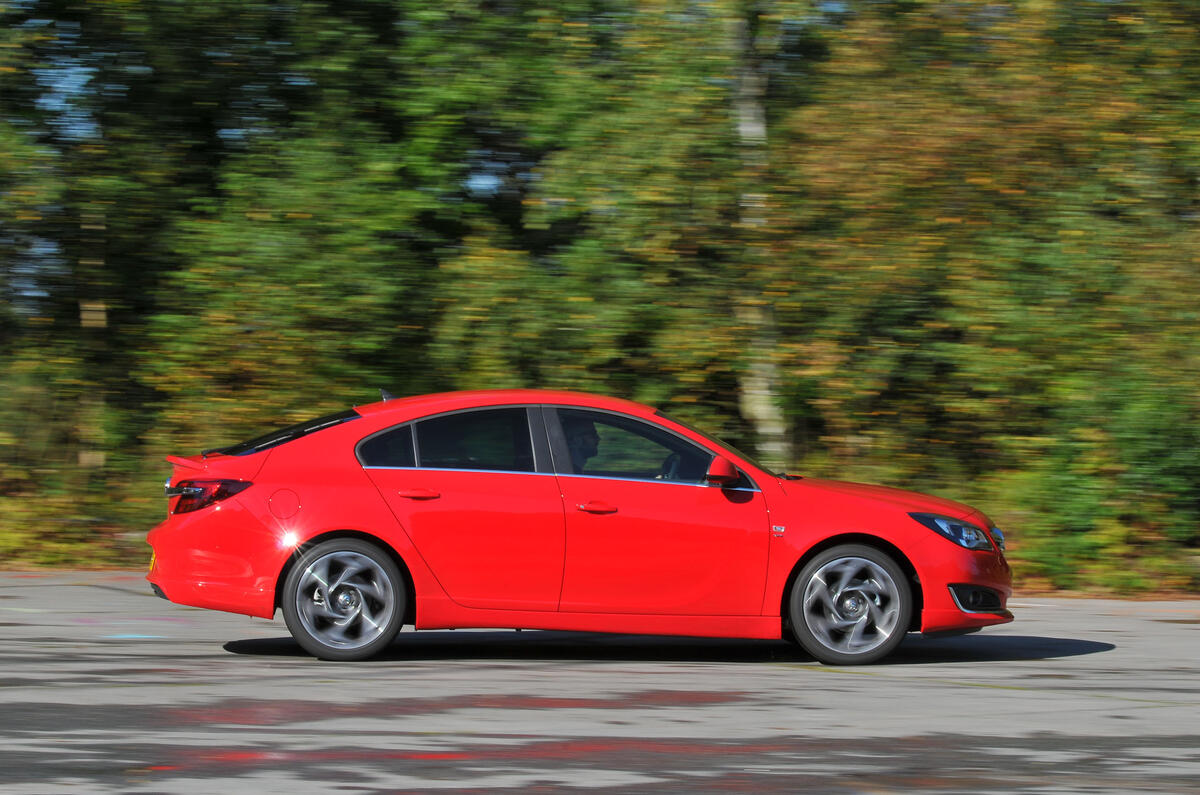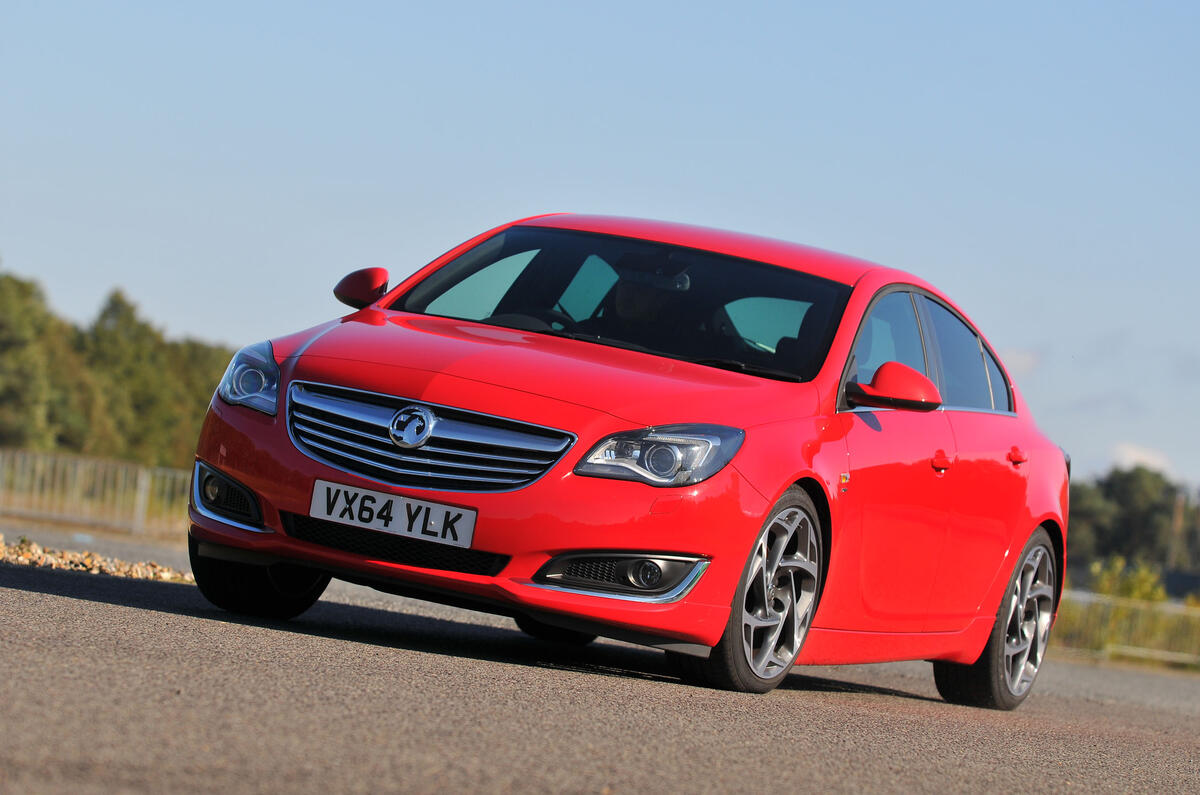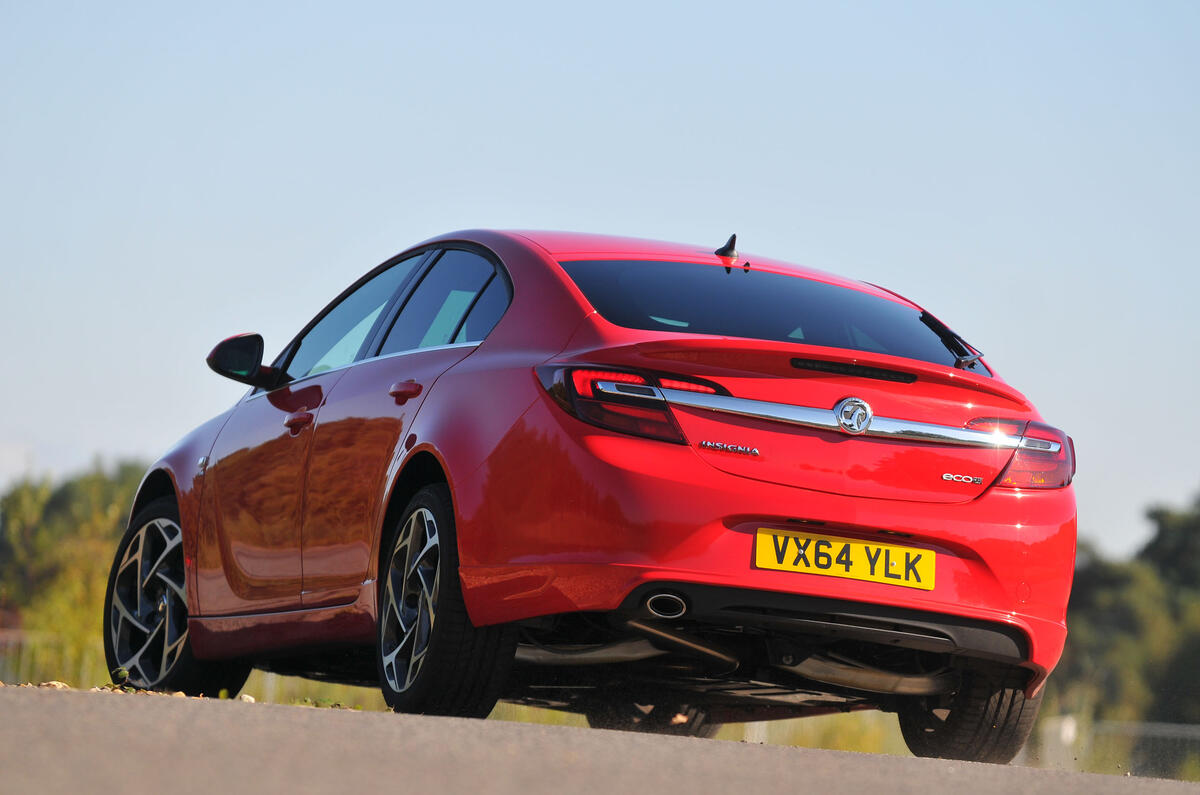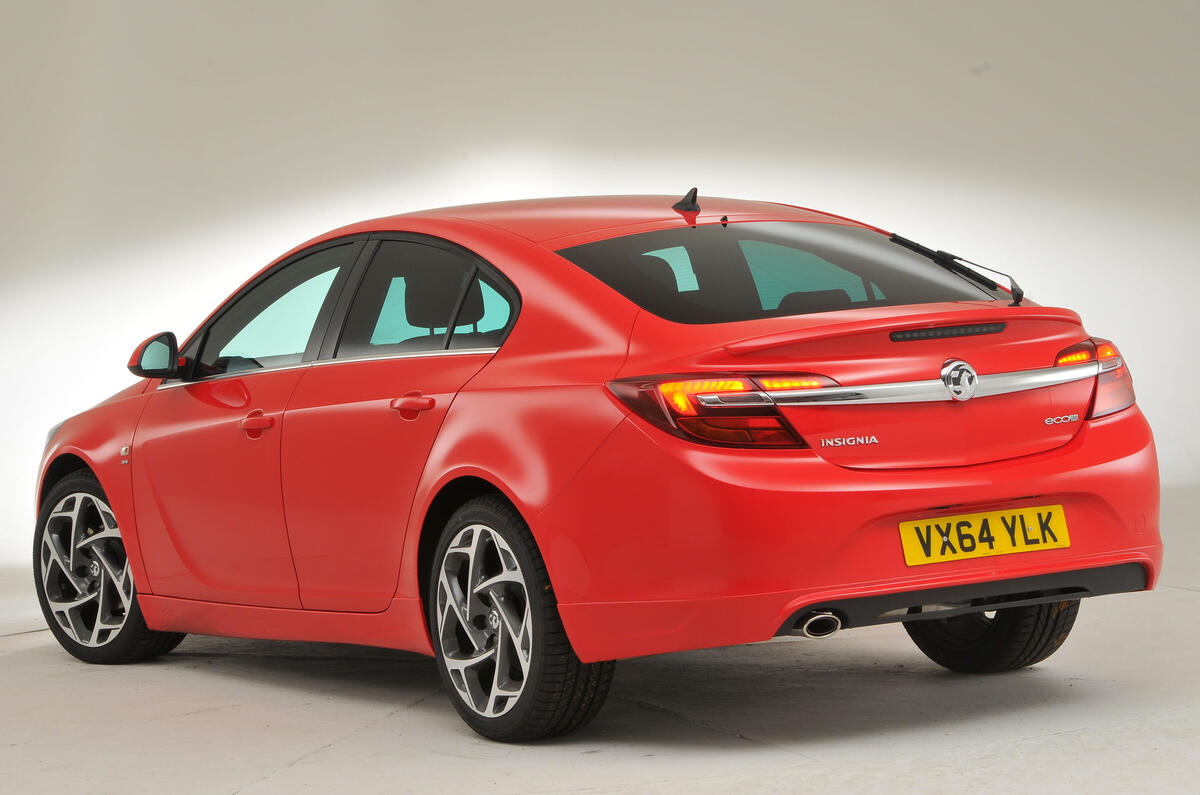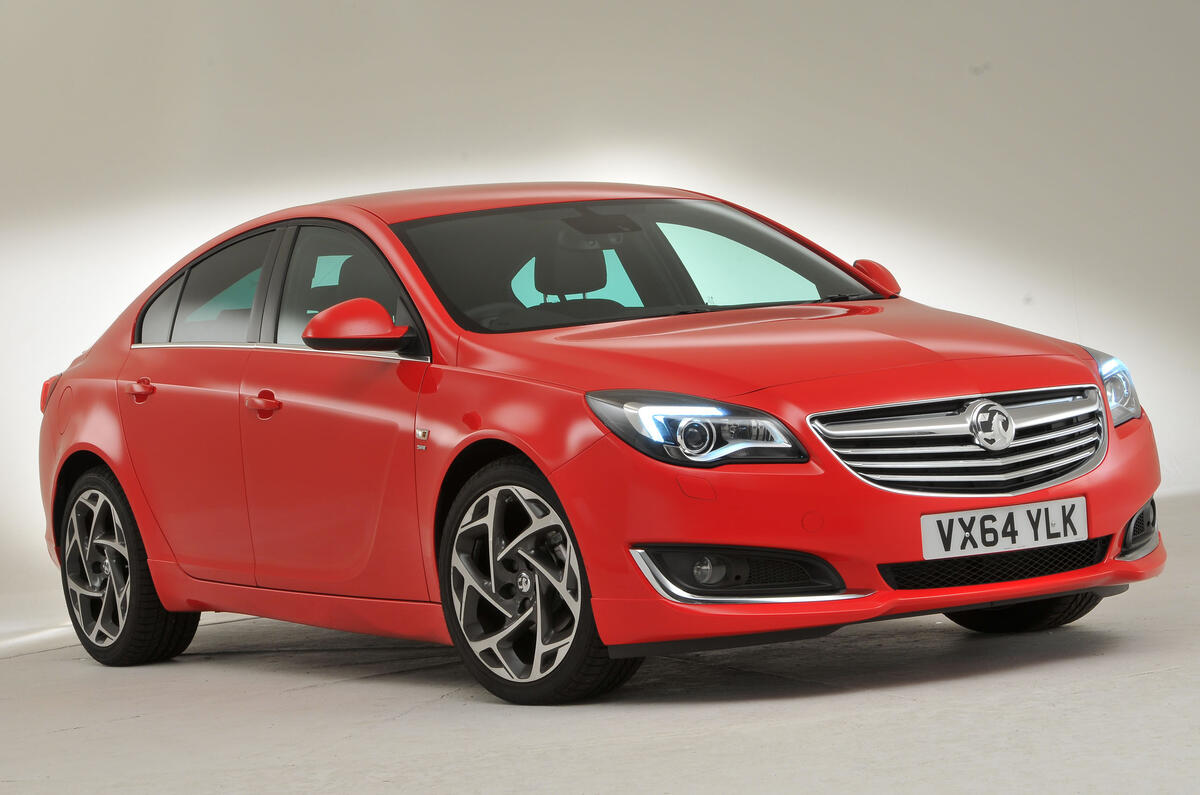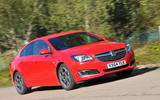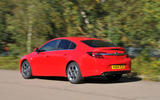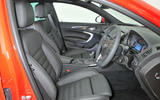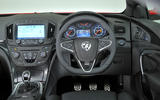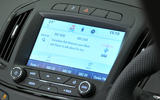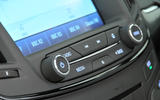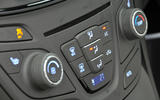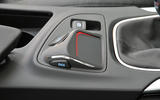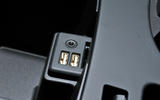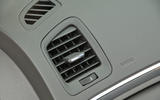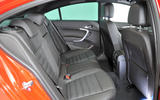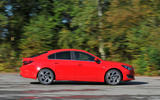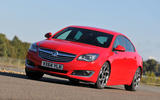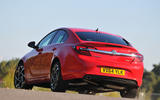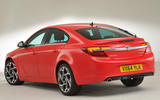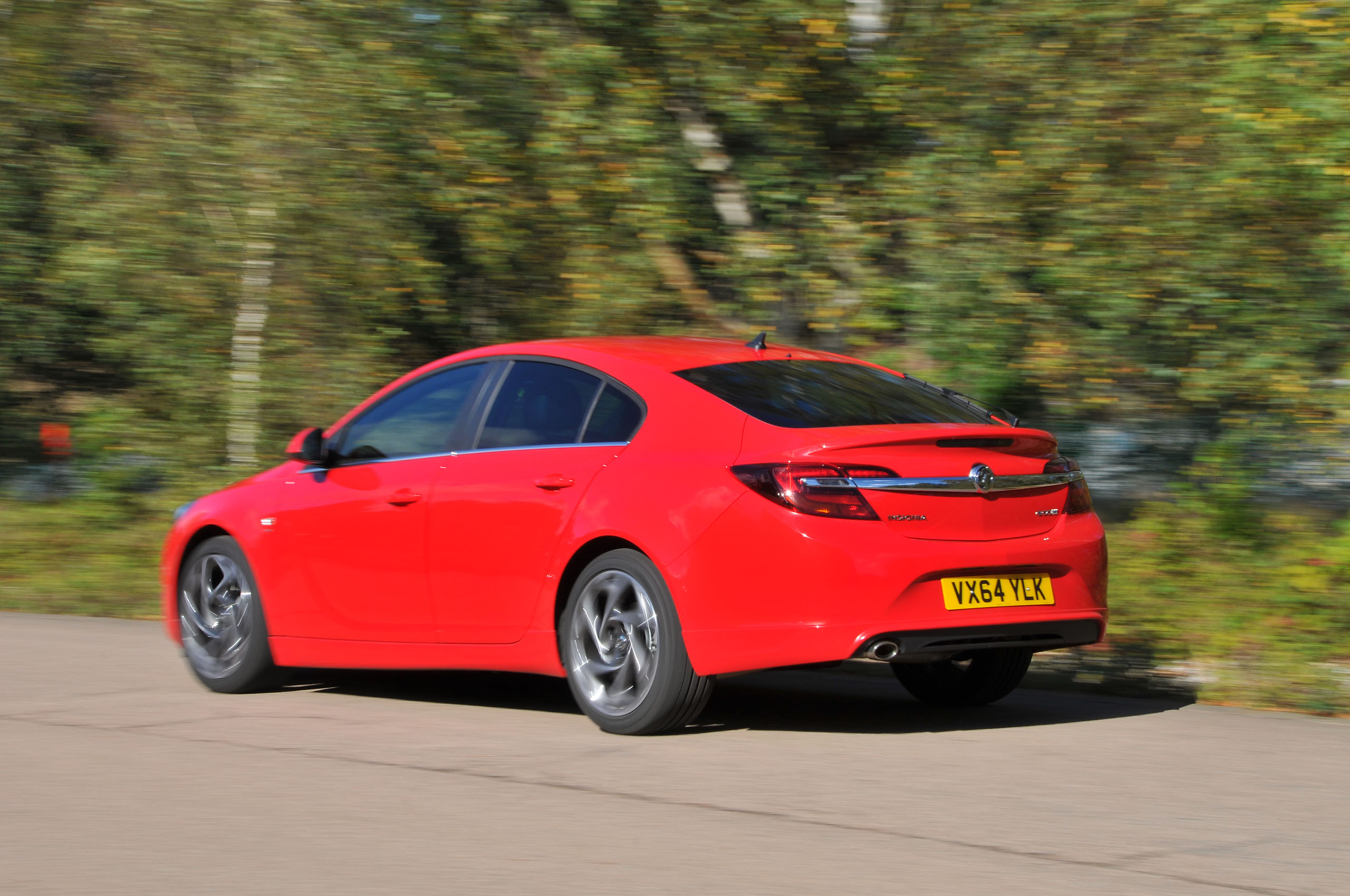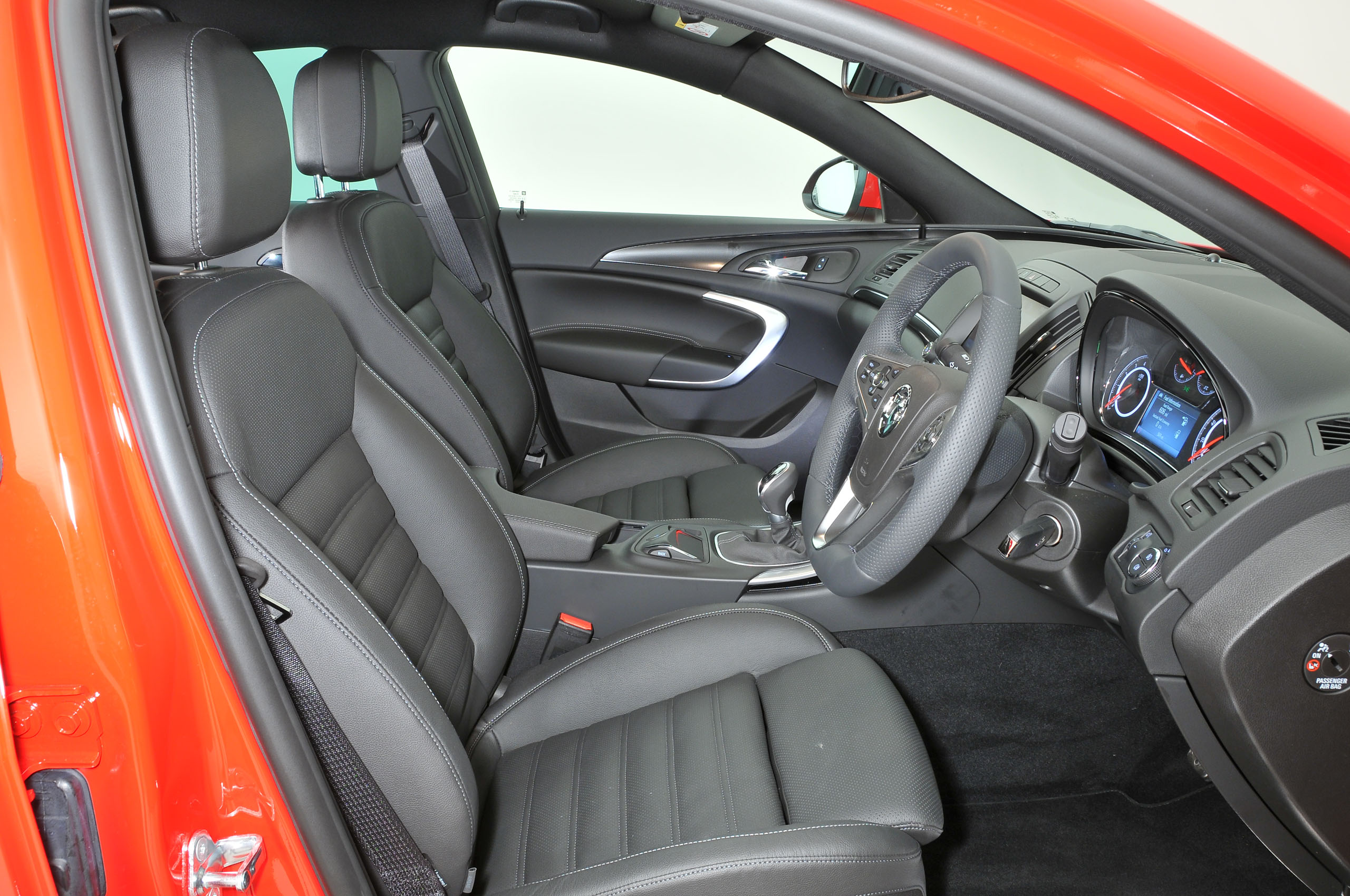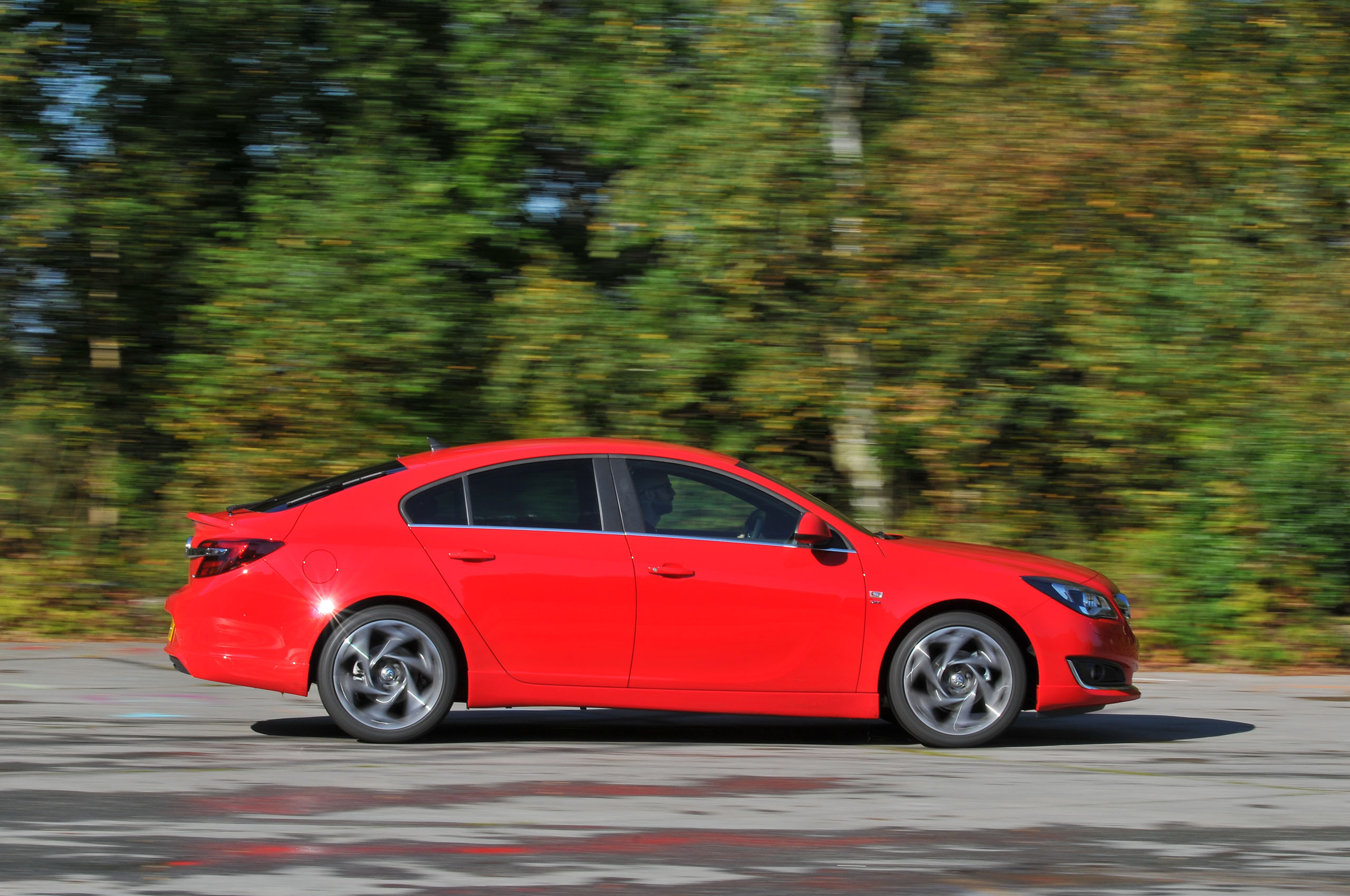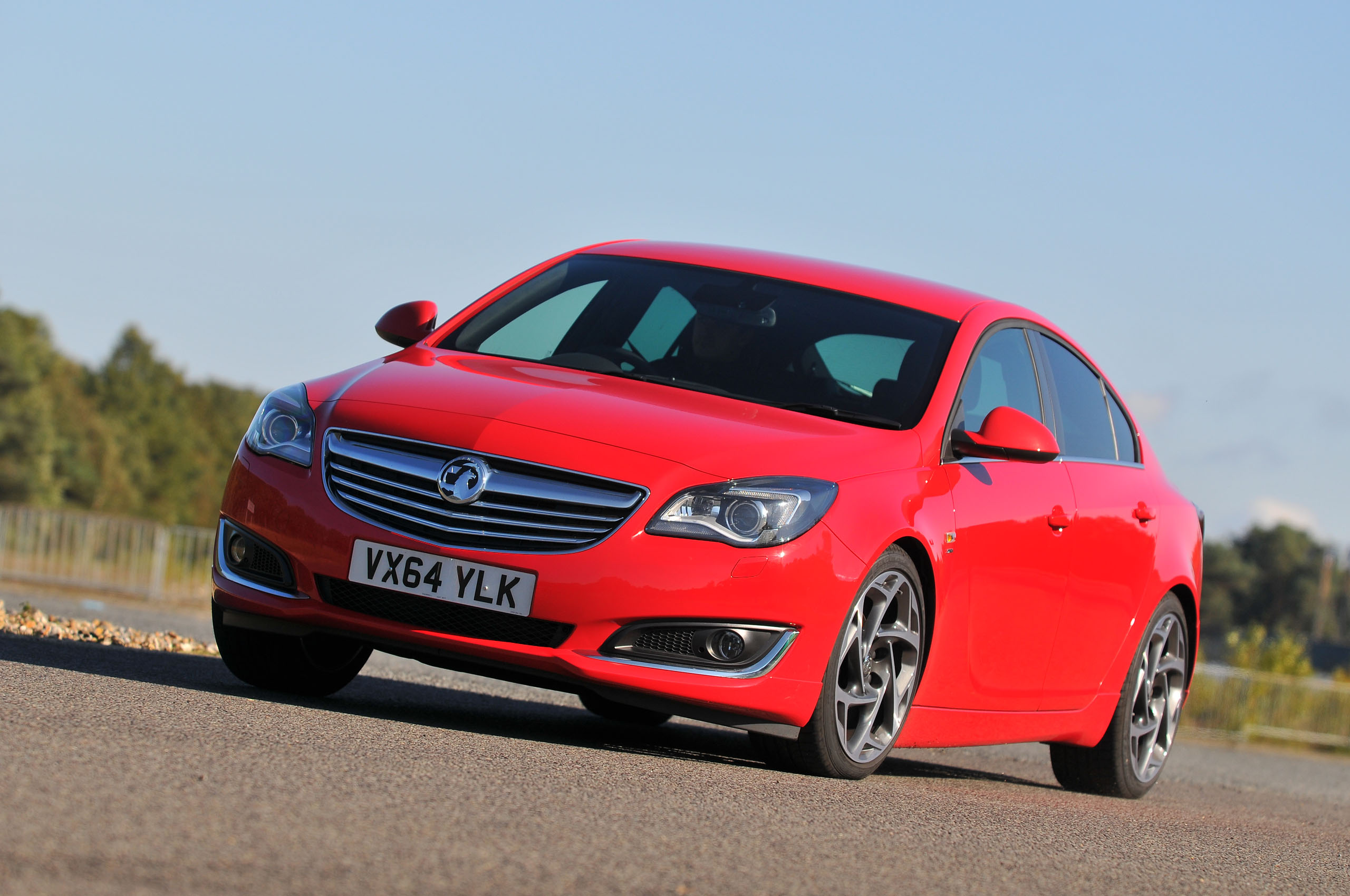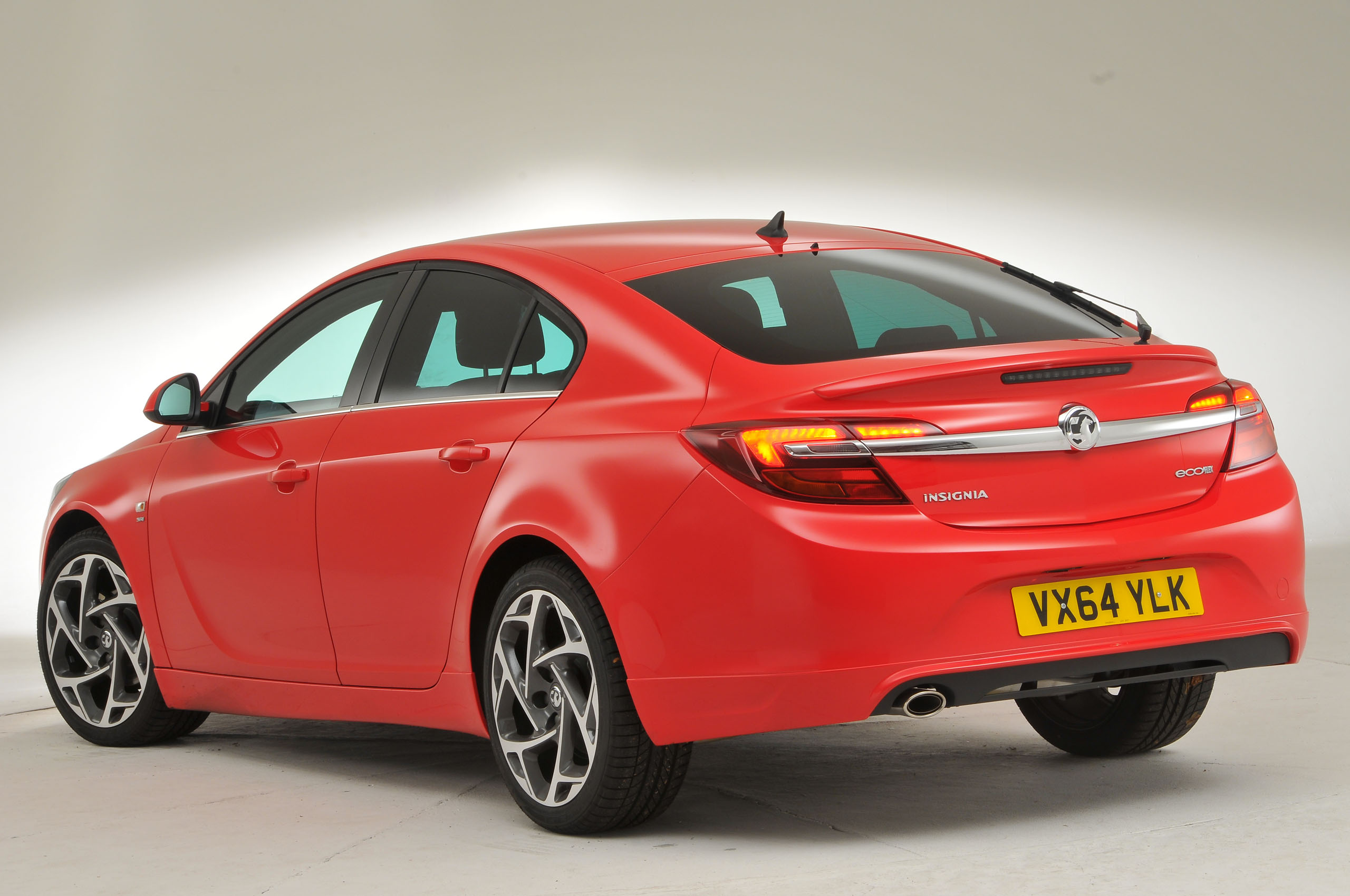The Vauxhall Insignia always had a spacious, functional sort of interior, and while the most recent round of revisions hasn’t radically changed that character, the fascia redesign and infotainment refit was much needed.
The centre stack is now much more intelligible than it used to be, the individual-little-button-count having taken a considerable dive. Central to the improvement is an 8in high-resolution colour touchscreen in the middle of the dashboard, which makes whatever you’re doing – be that programming the standard DAB radio or the optional sat nav – quite a lot quicker and easier.
Higher-end trim levels also come with a touchpad selector mounted on the centre console, immediately behind the gearlever, as well as an LCD-style multi-function speedometer that can be set to display a variety of information in several styles, all programmable by new steering wheel controls. Gone is the dated drive computer screen, fiddly old indicator wand interface and the poorly-placed rotary controller of the original Insignia - and they won't be missed.
What results is a cabin that may still be quite sombre, but now at least feels up-to-date and reasonably intuitive. Material qualty levels that quietly impressed us in 2008 have improved little since, and some of the fascia plastics and trims now look a little meagre and dowdy. They're acceptable at the lower-end of the Insignia range, but if Vauxhall wants this car to be taken seriously as a credible alternative to a premium-branded executive saloon, they'll need a big lift for the next Insignia model generation.
But accommodation levels are good. In the front, leg and headroom are plentiful and there are comprehensively adjustable seats and a wide range of reach/rake adjustment for the steering wheel. Room is good but not outstanding in the rear, but the boot is long, wide and respectably deep, although the floor never goes flat, even with the rear seats folded.
Choosing the right trimmed Insignia is far harder than picking the power unit with eight main trims and a sport-influenced VXR trim. The entry-level Design models come with DAB radio, Bluetooth, cruise control, electrically adjustable driver's seat and automatic lights, while Limited Edition models add Vauxhall's OnStar system, 18in alloys, heated front seats and steering wheel and parking sensors.
The mid-range SRi and SRi VX-Line trims get lowered suspension, front fog lights, sports seats, all-round electric windows and tinted rear windows, while the latter gets a sporty bodykit. SE trimmed Insignia's chiefly get automatic wipers and adaptive headlights, while the fleet-favourite Tech Line models get sat nav, chrome trim and an anti-dazzle rear view mirror.
The range-topping Elite models get the addition of climate control, folding mirrors, electrically adjustable front seats and a leather upholstery. Those in need of a bit more power are well catered for through the 321bhp VXR Supersport which comes with Recaro seats, a flat bottom steering wheel, bi-xenon headlights and a beefy body kit including a noise optimised exhaust system.
The 2017 Insignia Grand Sport and Sports Tourer may of had a light facelift given to its interior, but don't think for one moment Vauxhall has neglected it, as each of the five trims endows the new exec Vauxhall with more technology and equipment than previously. Entry-level Design models will come with Vauxhall OnStar, air conditioning, cruise control, keyless entry and start, a front camera, and Vauxhall's IntelliLink infotainment system complete with a 7.0in touchscreen display and smartphone integration, as standard
SRi models gain sports seats, dual-zone climate control, rear USB ports, automatic lights and wipers, 17in alloy wheels and a rear spoiler, while upgrading to SRi VX-Line Nav adds sat nav, an 8.0in touchscreen display and a VXR-styled bodykit. Tech Line adds parking sensors and electrically adjustable driver's seat, while Elite Nav models bestow luxuries such as leather upholstery, heated front seats, IntelliLux LED headlights and a Bose sound system to a comprehensive package.


